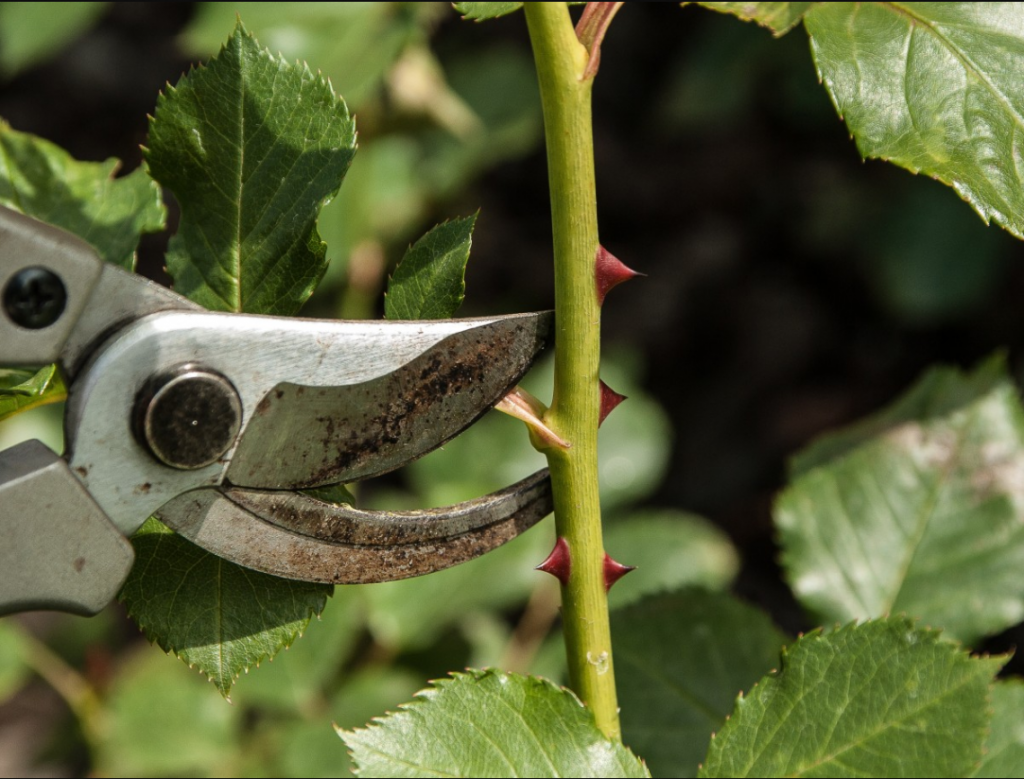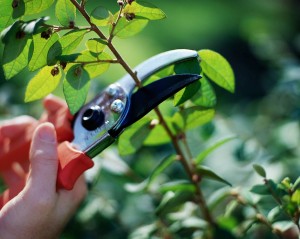
What is Pruning?
Most plants benefit from regular pruning and maintenance in some capacity. Pruning is the process of cutting away dead or overgrown branches or stems. This practice encourages the plant to spend its energy on producing new blooms instead of going to seed (and ending its life cycle/going into dormancy). In addition to extending the flowering season of your plants, deadheading keeps your garden looking neat and well-kept. Be sure to compost the dead blooms!
When to Prune
The trick to pruning is to know when to do it. Pruning at the wrong time of the year may result in fewer flowers and fruits, but it usually won’t harm the plant in the long run. Additionally, pruning too late in the season will encourage a lot of tender new growth that will be killed once winter comes. Many flowering and fruiting plants prefer to be pruned in late winter and early spring when they are dormant. Blooming trees and shrubs will start revealing new buds when the old ones have fallen, so they need to be pruned shortly after flowering. Other plants need to be continually pruned or deadheaded to remain healthy.
How to Prune
Whatever plants you need to prune, make sure you have the right tools. For delicate stem plants such as pansies, nasturtium, and alyssum you can simply pinch off the dead flower at its base using your fingers. For harder stalk plants, such as sunflowers or coneflowers, you may use a clean pair of garden scissors. Sharp, clean tools not only make the job of pruning easier, but they also are crucial to keeping your plants healthy.
When pruning, remove any dead, diseased, or damaged stems as soon as you see them. Also remove crossing branches, water sprouts, and suckers.
Pruning Techniques
Any time you physically interfere with the natural growth of your plant, you’re pruning. There are many different pruning techniques, depending on the plant and what you want to achieve.
Pinching: This technique is great for younger plants. By nipping off the top 1/4″-1″ of green growth you will encourage your plants to produce a fuller bush.
Selective Pruning: Selective pruning is when you prune selective branches and stems. However, at no time should more than one-third of all branches be trimmed back. This technique is good for hibiscus, as it keeps some branches undisturbed and blooming while letting new branches develop.
Full Prune: This is when you cut back all the branches to 2-3 nodes per branches. Even though you have to wait a while for them to bloom again, this usually yields the best, most full plant.
Hard Prune: Rejuvenating or Hard Prune is for older plants with lots of dead wood or scrawny growth. Cut back the branches to no lower than one-foot above soil level and remove larger branches than you would for a normal prune. This technique is a drastic measure for mature plants that are not growing or blooming well. It will force the plant to regrow a more compact, rounded bush.
Corrective Pruning: Corrective pruning is pruning those branches that are undesirable or damaged. You can correctively prune by taking off dead tips or branches that were damaged by cold or by cutting off long stray branches that stick out.
